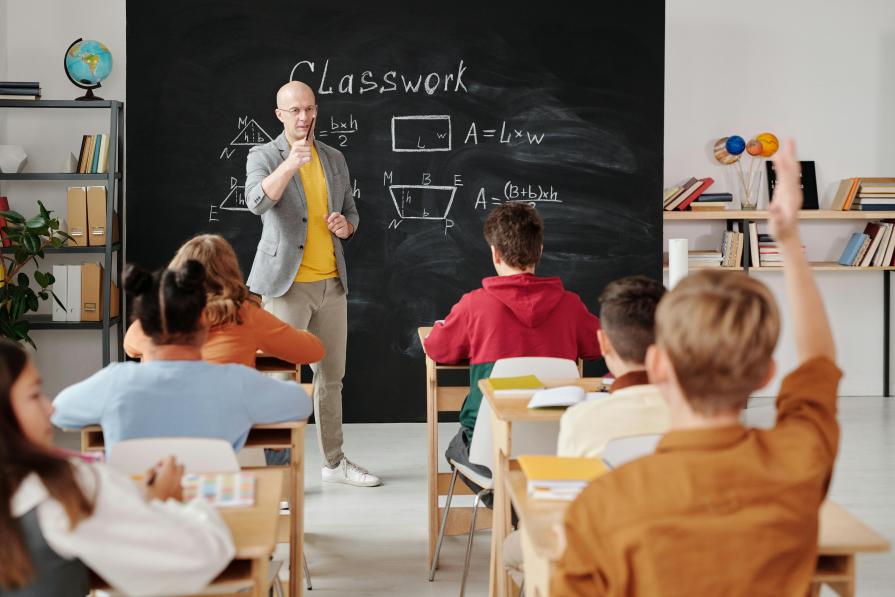In the last century, there were unique schools on the territory of Hamburg: in these educational institutions, students and teachers had complete freedom of action - the management did not forbid anything. What was the point of the idea?
A revolution in education
The transition from the 19th century to the 20th century went down in the history of pedagogy as an era of innovation and reform, when many concepts appeared that put respect for the individuality and identity of the student at the center. Such methods were aimed at developing children's ability to think and act independently. These methods began to be actively introduced into the educational system of different countries as an alternative to outdated models, where students were only required to memorize the material.

Hamburg became one of the centers of innovative education in Europe, and at the end of the 19th century, teams of progressive educators began to appear here, who printed their textbooks and appealed to governments for permission to open experimental schools.
Modernization of the German education system at the time was necessary: the reason was rapid industrial development, the emergence of human rights movements, and an overly pragmatic approach to teaching in local schools.
The period of experimental schools in Germany began after the end of the First World War and the November Revolution. Radical changes took place in education: social discrimination was eliminated, and general education became free for all. The "highlight" of such schools was to provide students with complete freedom – the concept looks bold even in 2024!
Principle of Operation
The principals of the Hamburg schools deliberately rejected the outdated school methods. Their goal was to create a renewed society where the joint activity and self-realization of each person prevails. The innovators dreamed of creating an ideal school based on the principles of freedom and community, and took the concept to the extreme, adhering to the slogan "Start with the child". Schools did not have clear rules, educational programs and specific goals, children had the right to act on their own, but had to learn responsibility and self-discipline in the classroom. Teachers, too, enjoyed complete freedom in their teaching methods.
In the 20th century, Hamburg's schools were transformed into tightly knit communities where students, teachers and parents came together on the basis of mutual understanding and trust. Teachers in these institutions became teachers, mentors and friends, creating an atmosphere of fraternal unity. Even though each of these progressive schools had its own unique characteristics, they all shared several principles:
- Autonomy in management,
- Independence from standard curricula invented by the state,
- Freedom in the selection of teaching staff,
- Mixed classes for boys and girls.
From the very beginning, the philosophy of the school was explained to the students in detail: they determined the rules themselves, communicated with the teachers on a first-name basis and chose what and when to study.
As part of the subject education, children were offered a wide range of courses: from economics and geography to history, mathematics, chemistry, English and more. The format of the classes was determined by the teachers themselves, ranging from conversations and games to experiments and discussions. The children studied the main part of the material on their own, helping each other, topical topics were actively discussed during the lessons, scientific and literary works were demonstrated, and a collective assessment of creative tasks was carried out.

Hamburg's institutions differed from other experimental schools of the time: they were all located inside the city, aimed at working-class children, and provided education for free. Experimental methods were used for children under the age of 14 years.
The effect of such education
The news about Hamburg's unusual schools quickly spread around the world, attracting wide attention in different countries. It was amazing that in conditions of complete freedom, these schools did not descend into chaos, and the students effectively maintained order and discipline! Attendance at classes remained at a high level, the quality of assignments performed by students exceeded that of traditional schools. For children who had experienced the consequences of war and psychological trauma, such results were very akin to a feat. Hamburg teachers actively involved parents in the life of schools, organizing various events with the participation of all members of the students' families.
Disadvantages of the Total Freedom System
At the same time, Hamburg's experimental schools faced a number of serious problems. Conservative educators and some parents criticized the approach to education, while the disgruntled often complained about the lack of education and the predominance of the humanities, which did not meet their expectations.

In addition, the schools faced the consequences of the economic crisis in Germany after the war. The lack of educational materials and overcrowded classrooms for poor and sometimes starving children became a serious problem. As a result, the experimental schools were not able to radically change the traditional education system.
The End of an Era
By 1933, when the NSDAP came to power in Germany, experiments in schools had ceased: the Nazi regime did not allow freedom for teachers and students, and mixed education was abolished by law. Many of the teachers and graduates of these educational institutions were actively involved in the resistance movement against Nazism: it was only thanks to these people that the idea of free education continued to live.
In the era of the Hamburg Schools, many of their approaches found application outside Germany. For example, in the RSFSR after the October Revolution, the attempt to introduce self-government in schools led to temporary disorder, but over time a more structured system of children's self-government appeared, combined with labor education, which was characterized by greater strictness than in Hamburg
Interest in the Hamburg experiment was revived in the late 1960s and early 1970s, and at the beginning of the 21st century, a new stage of opening schools operating on similar principles began.





